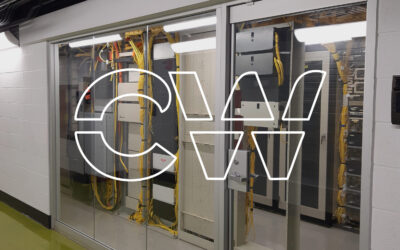Data Centers: Balancing Sustainability, AI, and Connectivity
Data centers are the backbone of the digital world. They power everything from our favorite websites and apps to the critical infrastructure that keeps our societies running, but data centers are also energy-intensive, and their environmental impact is coming under increasing scrutiny.
In recent years, there has been growing pressure on data centers to become more sustainable. This is due to a number of factors, including:
• Climate change: Data centers account for about 2% of global electricity consumption, and their energy needs are expected to continue to grow. This is putting a strain on the environment and contributing to climate change.
• Government regulation: Governments around the world are passing regulations to reduce greenhouse gas emissions from data centers.
• Public pressure: Consumers and businesses are increasingly demanding that the companies they use operate in a sustainable way.
The pressure on data centers is forcing operators to invest in a variety of sustainability initiatives, including:
• Renewable energy: Increasingly using renewable energy sources such as solar and wind power.
• Energy efficiency: Data center operators are implementing a variety of energy-saving measures, such as using more efficient cooling systems and server hardware.
• Water conservation: Working to reduce their water consumption, which is another major environmental impact.

Artificial intelligence (AI) is another major trend that is affecting data centers. AI applications are becoming increasingly complex and demanding, and they require more powerful and efficient computing resources, which is putting additional pressure on data centers to scale their capacity and improve their performance.
To meet the demands of AI, data center operators are investing in new technologies such as:
• High-performance computing (HPC) systems are designed to perform complex calculations very quickly which are essential for training and running AI models.
• Graphics processing units (GPUs) are specialized processors that are well-suited for accelerating AI workloads.
• Machine learning (ML) accelerators are hardware devices that are specifically designed for ML workloads.
The global need to be connected is also driving demand for data centers. As more and more people and devices connect to the internet, the need for data storage and processing capacity continues to grow.
To meet this demand, data center operators are building new facilities around the world. They are also investing in new technologies to improve the performance and efficiency of their data centers.
⊂More on sustainability trends ⊃
Balancing sustainability, AI, and connectivity
Balancing sustainability, AI, and connectivity is a challenge for data center operators, but it is essential for the future of the digital world.
By investing in new technologies and implementing sustainable practices, data center operators can reduce their environmental impact while meeting the growing demands of AI and global connectivity.
Here are some specific examples of how data center operators are balancing these competing demands:
• Google is investing in renewable energy for its data centers and has a goal of running its data centers on 100% carbon-free energy by 2030.
• Microsoft is using AI to improve the energy efficiency of its data centers and has developed an AI-powered cooling system that can save up to 40% of the energy used for cooling data centers.
• Amazon is building new data centers in close proximity to renewable energy sources and is also investing in new technologies to reduce the water consumption of its data centers.



